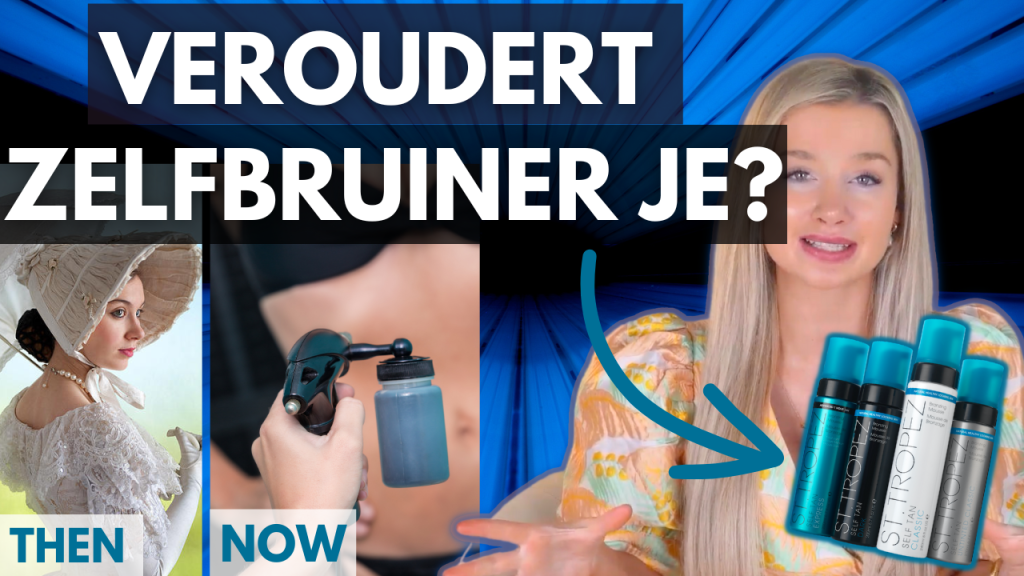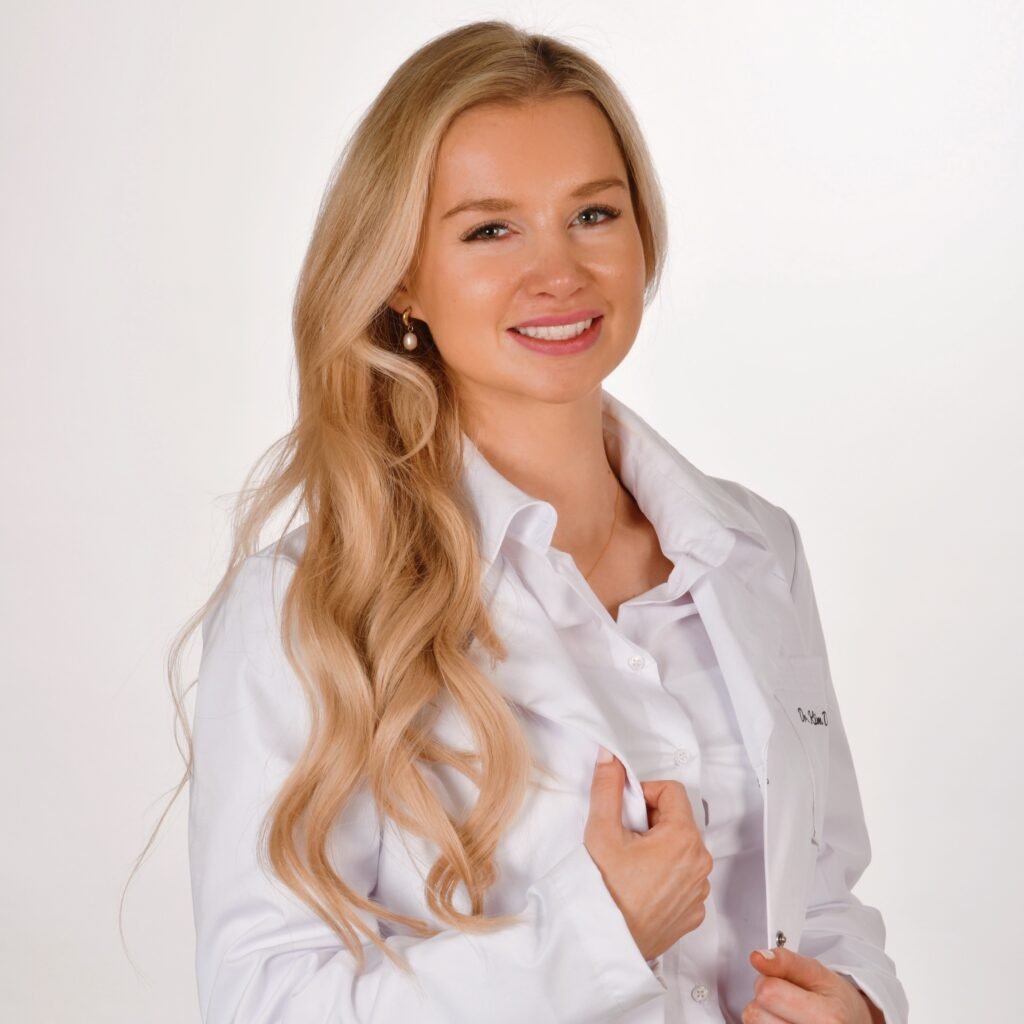DISCLAIMER: Ik ben geen dermatoloog, maar ik ben wel een medisch arts, een enthousiasteling op het gebied van schoonheid en een grote fan van zelfbruinende producten. Daarom heb ik wat onderzoek gedaan naar de veiligheid van deze producten en of ze mogelijk vroegtijdige veroudering kunnen veroorzaken. Ik heb verschillende wetenschappelijke studies geraadpleegd om mijn antwoord te vinden.
Referenties:
- Johnson JA,Fusaro RM.Protection against long ultraviolet radiation: topical browning agents and a new outlook. Dermatologica 1987;175:53-7. Yourick JJ, Koenig ML, Yourick DL, et al. Fate of chemicals in skin after dermal application: does the in vitro skin reservoir affect the estimate of systemic absorption?
- Toxicol Appl Pharmacol. 2004;195:309-320. Beutler E, Guinto E. The metabolism of dihydroxyacetone by intact erythrocytes. J Lab Clin Med. 1973;82:534-545. Ouellette M, Makkay AM, Papke RT.
- Dihydroxyacetone metabolism in Haloferax volcanii. Front Microbiol. 2013;4:376. Akin FJ, Marlowe E. Non-carcinogenicity of dihydroxyacetone by skin painting. J Environ Pathol Toxicol Oncol. 1984;5:349-351.
- Petersen AB, Na R, Wulf HC. Sunless skin tanning with dihydroxyacetone delays broad-spectrum ultraviolet photocarcinogenesis in hairless mice. Mutat Res. 2003;542:129-138.
- Kim SB, Hayase F, Kato H. Desmutagenic effect of alpha-dicarbonyl and alpha-hydroxycarbonyl compounds against mutagenic heterocyclic amines. Mutat Res. 1987;177:9-15.
- Petersen AB, Wulf HC, Gniadecki R, et al. Dihydroxyacetone, the active browning ingredient in sunless tanning lotions, induces DNA damage, cell-cycle block and apoptosis in cultured HaCaT keratinocytes. Mutat Res. 2004;560:173-186.
- Lloyd RV, Fong AJ, Sayre RM. In vivo formation of Maillard reaction free radicals in mouse skin. J Invest Dermatol. 2001;117:740-742.
- Pham HN, DeMarini DM, Brockmann HE. Mutagenicity of skin tanning lotions. J Environ Pathol Toxicol. 1979;3:227-231.
- Yamaguchi T. Mutagenicity of trioses and methyl glyoxan on Salmonella typhimurium. Agric Biol Chem. 1982;46:849-851.
- Follett KA, Johnson JA, Fusaro RM. Protection of photosensitized rats against long ultraviolet radiation by topical application of compounds with structures similar to that of dihydroxyacetone. Dermatologica. 1987;175:58-63.
- Haywood, R. M., & Wardman, P. (1989). The chemistry of melanoidins: some current research questions. Food Chemistry, 31(2), 83-97.
- Faurschou A, Janjua NR, Wulf HC. Sun protection effect of dihydroxyacetone. Arch Dermatol. 2004;140:886-887.
- Jung, K., Seifert, M., Herrling, T., Fuchs, J., & Zastrow, L. (2007). UV-generated free radicals (FR) in skin: their prevention by sunscreens and their induction by self-tanning agents. Spectrochimica Acta Part A: Molecular and Biomolecular Spectroscopy, 66(3), 727-731.
- Dihydroxyacetone (DHA) as used in cosmetic products. (2008). CIR Compendium, 26(1), 1-89.
- Armas LA, Fusaro RM, Sayre RM, et al. Do melanoidins induced by topical 9% dihydroxyacetone sunless tanning spray inhibit vitamin d production? A pilot study. Photochem Photobiol. 2009;85:1265-1266.
- Mahmoud, B. H., & Hexsel, C. L. (2010). Aging and photoaging: a comprehensive review. Journal of Cosmetic Dermatology, 9(4), 260-270.
- Nilsen LT, Hannevik M, Veierød MB, et al. Protection against ultraviolet A-induced oxidative damage in human skin by dihydroxyacetone. Photodermatol Photoimmunol Photomed. 2010;26(1):32-37.
- Morren M, Dooms-Goossens A, Heidbuchel M, et al. Contact allergy to dihydroxyacetone. Contact Dermatitis. 1991;25:326-327.
- Lindqvist PG, et al. Photodermatol Photoimmunol Photomed. 2012 Apr;28(2):58-62).
- “Self-Tanners and Bronzers.” American Academy of Dermatology. https://www.aad.org/public/everyday-care/sun-protection/sunscreen-patients/self-tanners-bronzers
- “Dihydroxyacetone.” Cosmetics Info. https://cosmeticsinfo.org/ingredient/dihydroxyacetone
- “Self-tanners: Can they prevent premature aging?” Harvard Health Publishing. https://www.health.harvard.edu/staying-healthy/self-tanners-can-they-prevent-premature-aging
- “The Maillard reaction in vivo.” The Journal of Investigative Dermatology. https://www.ncbi.nlm.nih.gov/pmc/articles/PMC2688146/
- “Sunless Tanning Products.” U.S. Food and Drug Administration. https://www.fda.gov/cosmetics/cosmetic-products/sunless-tanning-products
- “Consumer Survey on Cosmetic Products.” Harris Poll. https://www.harrisinteractive.com/insights/skin-care-in-america-2017
- “The safety of dihydroxyacetone (DHA) for use in sunless tanning products.” U.S. Food and Drug Administration. https://www.fda.gov/cosmetics/cosmetic-ingredients/dihydroxyacetone-dha
- Bovenschen HJ, Korver JE, van der Valk PG. Contact dermatitis to self-tanning products. Contact Dermatitis. 2009;60:290-291.



